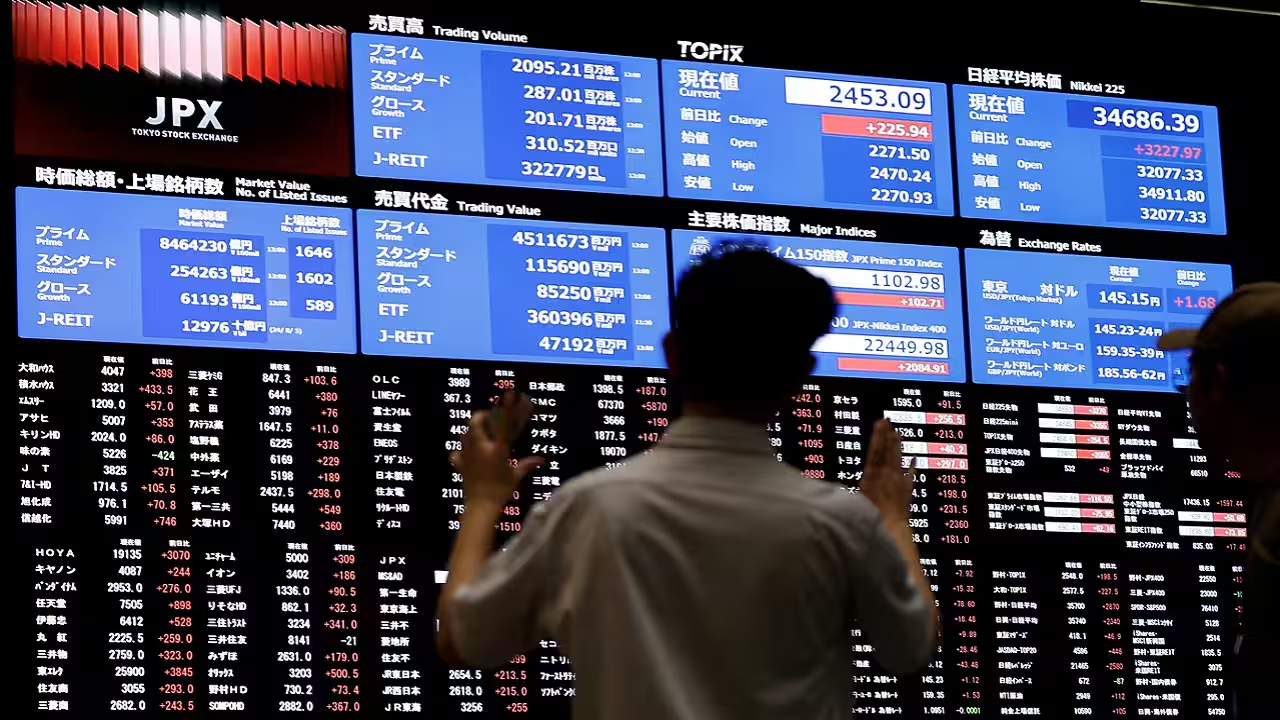
In a notable turn of events, Asian equity markets experienced a majority increase even as Wall Street faced continued declines. The global financial landscape has been oscillating recently, influenced by a multitude of factors ranging from economic indicators to geopolitical tensions. Despite persistent setbacks in the United States stock markets, Asian shares have demonstrated resilience, with many indices edging higher. This divergence underscores the complex nature of global financial markets and highlights the varying investor sentiments across regions.
Wall Street’s Extended Losses and Their Ripple Effect
The Current State of U.S. Markets
Over the past few sessions, U.S. stock exchanges have seen significant declines. The Dow Jones Industrial Average, S&P 500, and NASDAQ have all recorded consecutive losses, reflecting uncertainty among investors. Factors contributing to this downtrend include inflation concerns, interest rate hikes by the Federal Reserve, and lingering geopolitical tensions, particularly surrounding trade policies and international conflicts.
According to U.S. News & World Report note that investors are grappling with economic data indicating slowing growth, alongside inflation fears that have been reigniting during recent weeks.
The Impact on Investor Sentiment
Extended losses in major U.S. indices have led to increased volatility and cautiousness among investors globally. Many are reevaluating their portfolios, with some moving towards safer assets like gold, government bonds, or even seeking opportunities in emerging markets, including Asia. The nervousness is primarily driven by concerns about a potential recession, which has become a pivotal topic in financial circles.
Asian Markets: A Different Trajectory
Resilience and Recovery
Contrary to the struggles on Wall Street, most Asian markets have managed to stay afloat or even gain ground. Stock exchanges in China, Japan, South Korea, and Southeast Asia exhibited a mostly positive trend. This resilience can be attributed to several regional factors:
- Strong Domestic Economic Data: Several Asian economies have reported healthier-than-expected economic indicators, boosting investor confidence.
- Policy Support: Central banks and policymakers across Asia have adopted measures to ensure liquidity and stability, which have helped underpin market performance.
- Relative Independence from U.S. Market Fluctuations: While global markets are interconnected, some Asian indices are less directly influenced by U.S. economic indicators at this moment, allowing for regional growth to persist.
Key Market Movers
Indices such as the Shanghai Composite and the Nikkei 225 saw gains amid the broader uncertainty. The Chinese market, in particular, responded positively to recent government measures aimed at supporting the technology and manufacturing sectors, which are vital components of the nation’s economic engine. Meanwhile, the South Korean Kospi and Indian Sensex also demonstrated resilience, driven by domestic consumption and export growth.
Factors Behind Asian Market Performance
Economic Indicators and Policy Measures
Some of the key reasons explaining Asia’s relatively positive performance include:
1. Domestic Economic Strength
Many Asian countries are experiencing robust GDP growth, employment figures, and manufacturing output, which instill investor confidence despite external uncertainties.
2. Government Stimulus and Policy Interventions
Significant fiscal stimulus packages and accommodative monetary policies have played a role in stabilizing markets, especially in China and Japan. These measures aim to bolster domestic demand and mitigate the impacts of global slowdown fears.
3. Rising Commodity Prices and Export Opportunities
Increased demand for commodities such as semiconductors and energy products has benefited exporting nations like South Korea, Taiwan, and Australia, supporting their stock markets.
Global Sentiment and Future Outlook
Market Sentiment Analysis
The contrasting performances highlight a persistent divergence in investor sentiment. While U.S. markets appear nervous and risk-averse, Asian markets are benefiting from regional growth narratives and supportive policy actions. This scenario presents both opportunities and challenges for investors seeking diversified portfolios.
Moving forward, the health of the global economy will heavily depend on several factors, such as:
- Inflation trends and central bank policies worldwide
- Progress on geopolitical issues and trade negotiations
- Recovery trajectories of major economies, including China and the U.S.
- Technological developments and sector-specific growth prospects
Potential Risks and Opportunities
While the positive performance of Asian markets provides a glimmer of hope, risks remain. Rapid changes in global monetary policies, unforeseen geopolitical tensions, and possible disruptions in supply chains could impact the prevailing optimism. However, the current scenario also opens avenues for strategic investments in emerging markets, especially in sectors like technology, green energy, and infrastructure.
Conclusion
In summary, the recent period exemplifies the complex and interconnected nature of today’s financial markets. Despite the extended losses witnessed on Wall Street, Asian shares have demonstrated resilience, primarily due to regional economic strength, supportive policies, and sectoral growth drivers. Investors should remain vigilant, diversify their portfolios, and stay informed about macroeconomic developments to navigate this volatile environment effectively.
For more updated news please keep visiting Prime News World.








